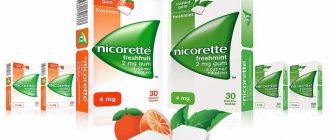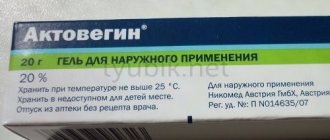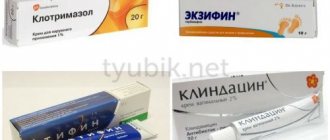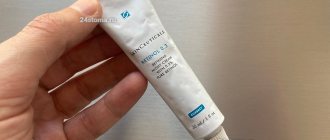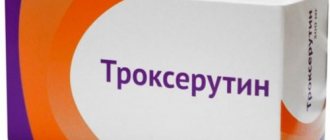Where is Chlorhexidine used?
The pharmaceutical product is used for the treatment and prevention of diseases caused by microorganisms sensitive to Chlorhexidine.
Depending on the concentration of the substance, the medicine can be used in the treatment of various pathologies.
After operations, in order to prevent infectious pathologies, doctors resort to using a pharmaceutical solution.
Chlorhexidine is often used for dental purposes for the treatment of dentures. In some cases, medication is used to treat periodontitis, stomatitis, and they are used to rinse the gums.
The medicine is used in:
- Urology
- Gynecology
- Surgery
Chlorhexidine Bigluconate solution for external and local use 0.05% 100ml
Compound
Active substance: chlorhexidine solution 20% - 2.5 ml.
[equivalent to 0.5 g of chlorhexidine bicluconate] (ROSBIO LLC, Russia) Excipient: purified water (GF XIII, FS.2.2.0020.15) - up to 1000 ml.
Pharmacokinetics
When applied locally and externally, it is not absorbed into the systemic circulation and does not have a systemic effect.
Indications for use
Trichomonas colpitis, cervical erosion, vulvar itching, prevention of sexually transmitted diseases (including gonorrhea, syphilis, trichomoniasis, chlamydia, ureaplasmosis); gingivitis, stomatitis, aphthae, periodontitis, alveolitis, disinfection of removable dentures; angina; postoperative care for patients in ENT and dentistry departments.
Treatment of wounds, burns and surfaces; disinfection of the patient's skin.
Cleaning the hands of the surgeon, medical staff and the surgical field before diagnostic manipulations and surgery.
Disinfection of working surfaces of instruments (including thermometers) and equipment, the heat treatment of which is undesirable.
Contraindications
Hypersensitivity to chlorhexidine, dermatitis.
With caution: childhood, pregnancy, breastfeeding.
Directions for use and doses
Externally, 5-10 ml of solution is applied to the affected surface of the skin or mucous membranes of the genitourinary organs, mouth for 1-3 minutes 2-3 times a day (on a tampon or by irrigation).
To prevent sexually transmitted diseases, insert the contents of the bottle using a nozzle into the urethra of men (2-3 ml), women (1-2 ml) and into the vagina (5-10 ml) for 2-3 minutes. After the procedure, it is recommended not to urinate for 2 hours. Treat the skin of the inner thighs, pubic area, and genitals.
Complex treatment of urethritis and urethroprostatitis is carried out by injecting 2-3 ml of the drug into the urethra 1-2 times a day, the course is 10 days, procedures are prescribed every other day.
The rinse solution is usually prescribed 2-3 times a day (for rinsing the mouth, the drug should be mixed with an equal amount of water).
Storage conditions
In a place protected from light at a temperature of 2 to 25 ° C. Keep out of the reach of children.
Best before date
2 years. Do not use after the expiration date stated on the package
special instructions
Do not allow chlorhexidine to come into contact with the eyes (with the exception of a special dosage form intended for use in ophthalmology), as well as contact with the meninges and the auditory nerve.
Description
Antiseptic.
Use in children
Use with caution in children.
Action
Antiseptic. Chlorhexidine exhibits a bactericidal effect (against gram-positive and gram-negative bacteria) - at a temperature of 22°C and exposure for 1 minute; fungicidal effect at a temperature of 22°C and exposure for 10 minutes; virucidal effect (against lipophilic viruses).
It affects bacterial spores only at elevated temperatures. It is stable, after treatment of the skin it remains on it in a certain amount sufficient to exhibit a bactericidal effect. Retains activity (albeit somewhat reduced) in the presence of blood, pus, various secretions and organic substances.
Does not have a damaging effect on objects made of glass, plastic and metals.
Side effects
Allergic reactions: skin rash, itching, severe allergic reactions, including anaphylaxis.
From the skin and subcutaneous fat: dry skin, itching, dermatitis, photosensitivity.
Local reactions: staining of tooth enamel, tartar deposits, taste disturbance.
Use during pregnancy and breastfeeding
If it is necessary to use it during pregnancy and breastfeeding, the expected benefits of therapy for the mother should be weighed against the possible risk to the fetus.
Interaction
Used in a neutral environment; at pH 5-8 the difference in activity is small; at a pH greater than 8, a precipitate forms.
Do not use in combination with anionic compounds, incl. with soap.
Incompatible with carbonates, chlorides, phosphates, borates, sulfates and citrates.
The use of hard water reduces bactericidal properties.
Compatible with drugs containing a cationic group (benzalkonium chloride, cetrimonium bromide).
Ethanol enhances the effectiveness of the drug.
Overdose
When used externally, overdose is unknown.
Release form
Solution for local and external use, 0.05%
Impact on the ability to drive vehicles and operate machinery
The use of the drug according to the instructions for medical use does not have a negative effect on the performance of hazardous activities that require special attention and quick reactions.
Contraindications
Chlorhexidine is contraindicated:
- In case of hypersensitivity to the components of the drug
- People suffering from dermatitis
- Do not use together with other antiseptics, for example, with hydrogen peroxide
- For ophthalmic use, rinsing the eyes with this product is prohibited.
- For disinfection of the surgical field
- After intervention on the auditory canal and central nervous system
It is important to know that the pharmaceutical product should be used with caution when treating children.
Brief instructions for use
To prevent sexually transmitted diseases, after unprotected sexual intercourse, after a maximum of 2 hours, 2-3 ml of a 0.5% solution should be administered into the urinary canal of a man, 1 ml into the canal for women and 5-10 ml into the vagina. You can treat skin areas near the genitals with the product. After administering the drug, try to postpone urination for 2 hours.
Your doctor should tell you about douching for gynecological diseases.
For sore throat, rinse the mouth with 0.5% or 0.2% Chlorohexidine solution.
For inflammatory pathologies of the urinary tract, it is necessary to inject 2-3 ml of 0.05% of the product into the urinary canal.
Before using the drug, you should consult your doctor.
Modern Pharmaceuticals of Russia
Chlorhexidine bigluconate 0.05% 100 ml
APPLICATION
The product is intended for use in medical institutions: hygienic treatment of the hands of medical personnel, including ambulance personnel; cleaning the hands of surgeons, operating nurses, midwives and other persons involved in operations and childbirth; hygienic treatment of the hands of medical personnel of medical institutions, the hands of medical workers of preschool and school institutions, social security institutions.
And also for the hygienic treatment of hands of students in educational institutions;
hygienic treatment of hands of workers of perfumery, cosmetics, chemical and pharmaceutical enterprises, public utility facilities; workers of food enterprises, public catering enterprises and food trade enterprises. Hygienic treatment of hands of workers of poultry, livestock, pig and fur farms; hand treatment for the population, protection from microbes in public places, in nature, and also as a prophylactic agent in the form of irrigation, rinsing and applications on the surface of the skin and mucous membranes. PACKAGING
Packaging is carried out in 25 ml, 50 ml, 100 ml in orange glass bottles with a screw neck, sealed with polyethylene stoppers and screw caps.
25 ml, 50 ml, 100 ml, 200 ml, 500 ml, 1000 ml in high-pressure polyethylene bottles with a polymer nozzle or a special nozzle with a screw cap, or equipped with a spray pump and a protective polyethylene cap.
5 l, 10 l, 20 l in canisters made of low-density polyethylene (for hospitals).
Glass bottles of 25 ml, 50 ml, 100 ml are placed in boxes with partitions or corrugated cardboard bars.
Bottles of 25 ml, 50 ml, 100 ml, 200 ml, 500 ml, 1000 ml made of high-density polyethylene should be packaged in polyethylene shrink film or in a box with partitions or grids made of corrugated cardboard.
Polyethylene canisters are placed in a wooden pallet, no more than 2 rows high, and covered with stretch film.
| Product | Individual box | Individual label | Group label | G/I size | Number of bottles per g/y |
| CGD, 0.05%, 100 ml | — | 45×67 | 93×70 | 360x226x248 with gasket | 80 |
| CGD, 0.05%, 100 ml (blue) | 48x48x130 | 45×67 | 93×70 | 255x255x270 | 50 |
| CGD, 0.05%, 100 ml (pink) | 48x48x130 | 45×67 | 93×70 | 255x255x270 | 50 |
BARCODES
Individual
| CGD, 0.05%, 100 ml | CGD, 0.05%, 100 ml (blue) | CGD, 0.05%, 100 ml (pink) |
| 4620008620039 | 4620008620381 | 4620008620374 |
Group
| CGD, 0.05%, 100 ml | CGD, 0.05%, 100 ml (blue) | CGD, 0.05%, 100 ml (pink) |
| 24620008620033 | 14620008620388 | 14620008620371 |
INSTRUCTIONS for using the disinfectant
Registration number:
RU.77.99.01.002.E.031065.08.11
Trade name of the drug:
Chlorhexidine bigluconate 0.05% – YuzhPharm
International nonproprietary name:
Chlorhexidine
Form:
Colorless or light yellow transparent liquid.
Compound:
chlorhexidine bigluconate, 0.05%, purified water.
Description:
"Chlorhexidine bigluconate 0.05% - YuzhPharm" is a ready-to-use product in the form of a clear or slightly opalescent liquid, colorless or light yellow, odorless or with a faint odor.
Group:
Disinfectant.
PROPERTIES:
The product is bactericidal against gram-positive and gram-negative bacteria (including pathogens of nosocomial infections), tuberculocidal, virucidal (acute respiratory viral infections, herpes, polio, hepatitis of all types, including hepatitis A, B and C, HIV infection, adenovirus etc.) and fungicidal (against fungi of the genera Candida and Trichophyton) action. According to the parameters of acute toxicity, “Chlorhexidine bigluconate 0.05% - YuzhPharm” belongs to class 4 of low-hazardous substances according to GOST 12.1.007-76 when applied to the skin, introduced into the stomach and inhaled. According to the classification of Sidorov K.K. when administered parenterally, the drug belongs to class 5 of practically non-toxic compounds. Skin-resorptive and sensitizing properties in the recommended modes of use of the product have not been identified. The product has a moderate irritating effect on the mucous membranes of the eyes. The maximum permissible concentration in the air of the working area of chlorhexidine bigluconate is 1 mg/m3.
The product can be used to treat the skin of children from birth.
INDICATIONS FOR USE:
The product "Chlorhexidine bigluconate 0.05% - YuzhPharm" is intended for use in medical institutions:
- for hygienic treatment of the hands of medical personnel, including personnel of ambulances;
- for disinfecting the skin of the injection field;
- for sanitary treatment of the skin and the skin of the feet to prevent fungal diseases;
- for disinfection of rubber gloves worn by personnel (made of materials resistant to chemicals) during surgical interventions and manipulations requiring surgical antiseptics, when working with potentially infected material (microbiological and other laboratories); when collecting medical waste of classes B and C.
- for disinfection of small instruments of simple configuration;
- as a prophylactic agent in the form of irrigation, rinsing and application on the surface of the skin, mucous membranes;
- for hygienic treatment of hands of students of general education institutions, staff of preschool and school institutions, social security institutions (nursing homes, hospices, etc.), employees of perfumery and cosmetics enterprises (including hairdressers, beauty salons, etc.), public food, communal facilities, food and chemical-pharmaceutical industries;
- for hygienic treatment of the skin of the hands, injection field, sanitary treatment of the skin and skin of the feet for the purpose of preventing fungal diseases, as a prophylactic for the population in everyday life.
CONTRAINDICATIONS:
Skin-resorptive and sensitizing properties have not been identified in the recommended modes of use.
The product has a moderate irritant effect on the mucous membranes of the eyes. HOW TO USE:
Hand hygiene:
3 ml of the product is applied to the hands and rubbed into the skin until dry for 30 seconds.
Treatment of the injection field, incl. at the vaccination site:
the skin is wiped with a sterile cotton swab or irrigated until completely moisturized, followed by holding for 30 seconds.
Preventive treatment of the feet, sanitary treatment of the skin:
With a generously moistened cotton swab, thoroughly treat each foot or area of skin with different cotton swabs or irrigate with the product until the skin is completely moisturized, holding time for at least 30 seconds.
Processing of gloves worn by personnel:
The outer surface of the gloves is thoroughly wiped with a sterile swab, generously moistened with the product. Processing time – at least 1 minute. Exposure - until the surface of the gloves is completely dry.
Small tools of simple configuration:
(in healthcare facilities, beauty salons, hairdressing salons, manicure and pedicure rooms, etc.) must be completely immersed in the product immediately after its use. The thickness of the layer of product over the products must be at least 1 cm. After the disinfection period of 5 minutes is completed, the products are removed from the container and washed with running drinking water for at least 1 minute.
As a prophylactic agent in the form of irrigation, rinsing and application - 5-10 ml of solution is applied to the surface of the skin or mucous membranes with an exposure of 1-3 minutes 2-3 times a day (on a tampon or by irrigation).
SPECIAL INSTRUCTIONS:
Use for external use only. Do not use the product after the expiration date. If the product accidentally gets into the stomach, it is recommended to drink several glasses of water with the addition of an adsorbent (for example, 10-15 crushed tablets of activated carbon per glass of water). Do not induce vomiting! If necessary, seek medical help.
RELEASE FORM:
The product is packaged in 25 ml, 50 ml, 100 ml in orange glass bottles. 25 ml, 50 ml, 100 ml, 200 ml, 500 ml, 1000 ml in high-pressure polyethylene bottles with a polymer nozzle, or with a special nozzle with a screw cap, or equipped with a spray pump and a protective polyethylene cap. 5 l each; 10 l; 20 liters in low-density polyethylene canisters (for hospital use).
STORAGE AND TRANSPORTATION CONDITIONS:
Store in tightly closed manufacturer's packaging at temperatures from 0 ºС to +30 °С; away from sources of heat and fire; Avoid storage in direct sunlight. No smoking! Store separately from medications, out of the reach of children. Transportation by any means of transport is allowed in accordance with the rules for the carriage of goods in force for this type of transport, at temperatures from 0 ° C to +30 ° C.
BEST BEFORE DATE:
The product's shelf life is 2 years in unopened manufacturer's packaging.
CONDITIONS FOR DISCHARGE FROM PHARMACIES:
Over the counter.
Where to put candles
Depending on the type of disease, the method of administering Chlorhexidine suppositories can be different: rectal or vaginal.
But it is important to understand that the use of suppositories is only permissible as prescribed by a doctor.
Before using the suppository, you need to wash and dry your hands well, then you need to remove it from the package and insert it into the vagina in a lying position.
To avoid leakage of the drug, do not rush to get out of bed.
Chlorhexidine suppositories help well with thrush and cystitis.
Why is Chlorhexidine better than peroxide?
- Hydrogen peroxide and Chlorhexidine are antiseptics. Medicines differ in their spectrum of effects and medicinal properties.
- Hydrogen peroxide, unlike Chlorhexidine, is available in only one dosage form, which is not very convenient.
Chlorkesidine suppositories are used for the treatment of gynecological and urological pathologies.
Both products disinfect wounds and abrasions well.
Chlorhexidine has a wider range of therapeutic effects; it is used to treat the hands of the surgeon and nurse before surgery, and it is also used in gynecology.
Chlorhexidine bigluconate 0.05% solution 100ml
Dosage form
Solution for local and external use.
Compound
Active substance:
Chlorhexidine bigluconate solution 20% – 2.5 ml
(equivalent to the content of 0.5 g of chlorhexidine bigluconate)
Excipient:
Purified water – up to 1000 ml
Description
Colorless, transparent or slightly opalescent liquid, odorless.
Pharmacotherapeutic group
Antiseptic.
ATX code:
D08AC02
pharmachologic effect
Antiseptic, exhibits a bactericidal effect (against gram-positive and gram-negative bacteria) - at a temperature of 22 oC and exposure for 1 minute; fungicidal effect - at a temperature of 22 ° C and exposure for 10 minutes; virucidal effect (against lipophilic viruses). Effective against gram-positive and gram-negative bacteria - Treponema spp., Neisseria gonorrhoeae, Trichomonas spp., Chlamydia spp., Ureaplasma spp. It is stable, after treatment of the skin it remains on it in a certain amount sufficient to exhibit a bactericidal effect. Retains activity (albeit somewhat reduced) in the presence of blood, pus, various secretions and organic substances. It extremely rarely causes allergic reactions, irritation of skin and tissues, and does not have a damaging effect on objects made of glass, plastic and metals.
Pharmacokinetics
When applied locally and externally, it is practically not absorbed.
Indications for use
Prevention of sexually transmitted infections (chlamydia, ureaplasmosis, trichomoniasis, gonorrhea, syphilis, genital herpes - use no later than 2 hours after sexual intercourse); disinfection of skin (abrasions, cracks). Purulent wounds, infected burns, bacterial and fungal diseases of the skin and mucous membranes in surgery, urology, obstetrics and gynecology, dentistry (gingivitis, stomatitis, aphthae, periodontitis, alveolitis).
Contraindications for use
Hypersensitivity, dermatitis.
Carefully
Childhood.
Use during pregnancy and breastfeeding
During pregnancy and breastfeeding, it is used only if the expected benefit to the mother outweighs the potential risk to the fetus and child.
Directions for use and doses
Locally. Externally.
5-10 ml of solution is applied to the affected surface of the skin or mucous membranes with an exposure of 1-3 minutes 2-3 times a day (on a tampon or by irrigation).
For the prevention of sexually transmitted diseases, the drug is effective if it is used no later than 2 hours after sexual intercourse. Using a dropper nozzle, insert the contents of the bottle into the urethra of men (2-3 ml), women (1-2 ml) and into the vagina (5-10 ml) for 2-3 minutes. Treat the skin of the inner thighs, pubis, and genitals. After the procedure, do not urinate for 2 hours. Complex treatment of urethritis and urethroprostatitis is carried out by injecting 2-3 ml of chlorhexidine solution into the urethra 1-2 times a day, the course is 10 days, procedures are prescribed every other day. A solution for rinsing when applied topically is usually prescribed 2-3 times a day.
Side effect
Allergic reactions (skin rash), dry skin, itching, dermatitis, photosensitivity, staining of tooth enamel, tartar deposits, taste disturbance.
Overdose
In case of accidental ingestion, it is practically not absorbed (gastric lavage should be done using milk, raw egg, gelatin). If necessary, symptomatic therapy is carried out.
Interaction with other drugs
Used in a neutral environment. At a pH greater than 8, a precipitate forms. The drug is not used in combination with anionic compounds, including soap. The drug is not compatible with carbonates, chlorides, phosphates, borates, sulfates and citrates. Chlorhexidine bigluconate increases the sensitivity of microorganisms to the action of kanamycin, neomycin, cephalosporins, chloramphenicol. Ethyl alcohol enhances the bactericidal effect of the drug.
special instructions
In patients with open traumatic brain injury, spinal cord injuries, or perforation of the eardrum, contact with the surface of the brain, meninges, and the cavity of the inner ear should be avoided.
In case of contact with the mucous membranes of the eyes, they should be quickly and thoroughly rinsed with water.
At temperatures above 100 oC the drug partially decomposes. Concomitant use with iodine is not recommended.
Impact on the ability to drive vehicles and other mechanisms
No data.
Release form
Solution for local and external use 0.05%.
100 ml of the drug in orange glass bottles, sealed with polyethylene stoppers and screw caps.
80 and 100 ml of the drug in polymer bottles with dropper nozzles and screw-on caps made of polymer materials.
Each bottle with instructions for use is placed in a cardboard pack.
It is allowed to place bottles together with an equal number of instructions for use in a group package.
Best before date
2 years. Do not use after the expiration date.
Storage conditions
In a place protected from light at a temperature not exceeding 25 oC.
Keep out of the reach of children.
Vacation conditions
Over the counter.
